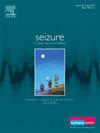东北农村癫痫猝死的发生率及危险因素分析
IF 2.7
3区 医学
Q2 CLINICAL NEUROLOGY
引用次数: 0
摘要
目的本前瞻性队列研究旨在为癫痫猝死(SUDEP)的发生率及危险因素提供详细资料。方法对东北农村地区6513例惊厥癫痫患者进行定期随访。死亡病例,包括可能和疑似猝死的病例,是通过死亡证明、口头尸检和专家小组讨论确定的。我们计算了总体、性别调整和特定年龄的SUDEP发病率,以及竞争风险下的累积发病率。我们采用单变量Cox回归分析和多变量竞争风险回归分析来确定与SUDEP相关的潜在危险因素。结果总SUDEP发病率为1.46 / 1000人年,其中女性为1.50 / 1000人年,男性为1.42 / 1000人年。1、3、5年SUDEP累计发生率分别为0、1.09‰、1.95‰。SUDEP发病率在30-49岁的人群中达到高峰。体重指数、发病年龄和最近的高频全身性强直阵挛发作显著增加了SUDEP的风险,其中高频发作是最强的预测因子。癫痫持续时间、癫痫发作时的意识状态和抗癫痫药物数量与SUDEP无关。改善药物依从性,虽然不能直接降低SUDEP风险,但可以降低癫痫发作频率,从而间接降低SUDEP风险。结论惊厥性癫痫患者的高频发作、起病年龄较轻、体重过重等因素显著增加了发生SUDEP的风险。这些发现有助于制定猝死风险概况,有助于准确识别高危人群,并为预防和管理策略提供信息。本文章由计算机程序翻译,如有差异,请以英文原文为准。
Incidence and risk factors of sudden unexpected death in epilepsy in rural Northeast China
Purpose
This prospective cohort study aims to provide detailed data on the incidence and risk factors of sudden unexpected death in epilepsy (SUDEP).
Methods
We recruited 6,513 patients with convulsive epilepsy from rural areas of Northeast China for regular follow-ups. Mortality cases, including probable and suspected SUDEP, were identified through death certificates, verbal autopsies, and expert panel discussions. We calculated overall, sex-adjusted, and age-specific SUDEP incidence rates, along with cumulative incidence under competing risks. We employed univariate Cox regression analysis and multivariable competing risks regression analysis to identify potential risk factors associated with SUDEP.
Results
The overall SUDEP incidence was 1.46 per 1,000 person-years, with rates of 1.50 for females and 1.42 for males. The cumulative incidence of SUDEP at 1, 3, and 5 years was 0, 1.09‰, and 1.95‰, respectively. SUDEP incidence peaked in individuals aged 30–49 years. Body mass index, age at onset, and recent high-frequency generalized tonic-clonic seizures significantly increased SUDEP risk, with high-frequency seizures being the strongest predictor. Epilepsy duration, consciousness status during seizures, and anti-seizure medication count were not linked to SUDEP. Improved medication adherence, though not directly reducing SUDEP risk, could lower seizure frequency, thus indirectly decreasing SUDEP risk.
Conclusion
High-frequency seizures, younger age at onset, and overweight status significantly increased the risk of SUDEP in patients with convulsive epilepsy. These findings contribute to the development of a SUDEP risk profile, facilitating the precise identification of high-risk individuals and informing prevention and management strategies.
求助全文
通过发布文献求助,成功后即可免费获取论文全文。
去求助
来源期刊

Seizure-European Journal of Epilepsy
医学-临床神经学
CiteScore
5.60
自引率
6.70%
发文量
231
审稿时长
34 days
期刊介绍:
Seizure - European Journal of Epilepsy is an international journal owned by Epilepsy Action (the largest member led epilepsy organisation in the UK). It provides a forum for papers on all topics related to epilepsy and seizure disorders.
 求助内容:
求助内容: 应助结果提醒方式:
应助结果提醒方式:


